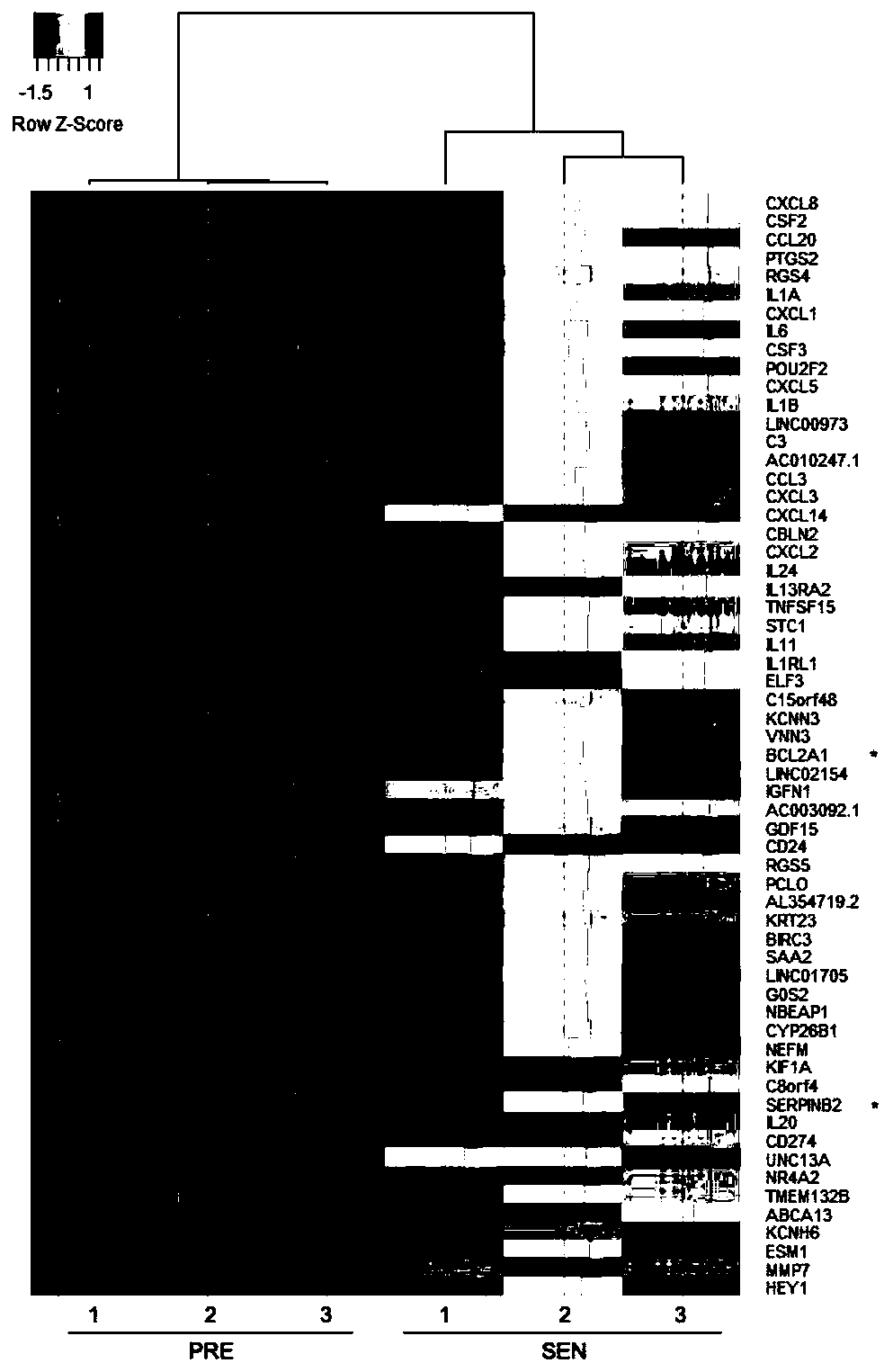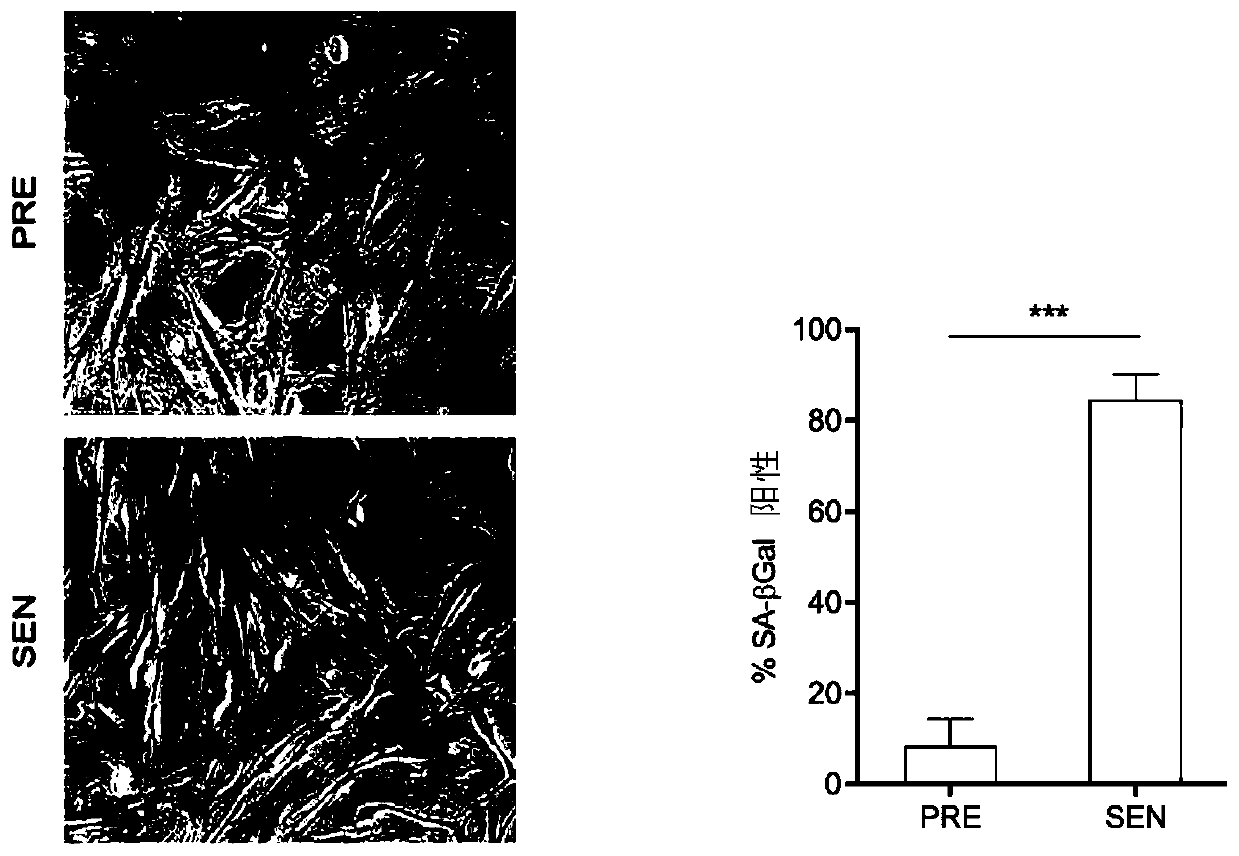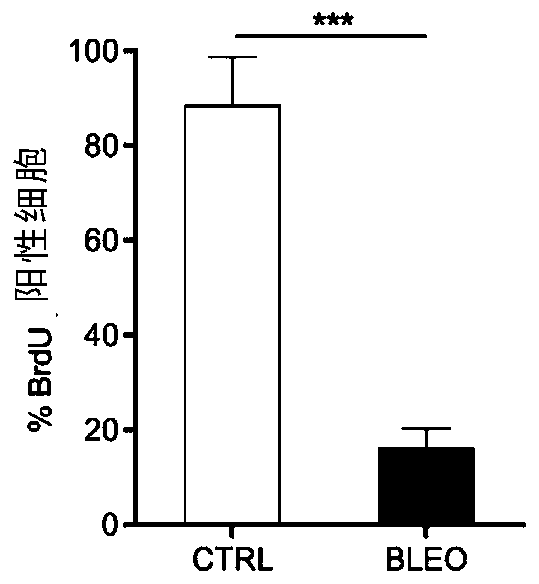Anti-aging drug D/S for targeting senescent cells in tissue micro-environment and application of anti-aging drug D/S
A technology of senescent cells and drugs, applied in drug combinations, medical preparations containing active ingredients, antidote, etc., can solve problems such as limited application, non-unique activation targets, applicability, accuracy, and actual effect limitations.
- Summary
- Abstract
- Description
- Claims
- Application Information
AI Technical Summary
Problems solved by technology
Method used
Image
Examples
preparation example Construction
[0109] The present invention has no particular limitation on the preparation method of the interfering RNA molecule, including but not limited to: chemical synthesis method, in vitro transcription method and the like. The interfering RNA can be delivered into cells by using appropriate transfection reagents, or can also be delivered into cells by various techniques known in the art.
[0110] As another option of the present invention, the CRISPR / Cas9 system can be used for targeted gene editing, thereby knocking out the ABL, PTGS2 or BCL2A1 gene in the targeted disease region. Common methods for knocking out ABL, PTGS2 or BCL2A1 genes include: co-transferring sgRNA or nucleic acid capable of forming the sgRNA, Cas9 mRNA or nucleic acid capable of forming the Cas9 mRNA into the targeted region or targeted cells. After the target site is determined, known methods can be used to introduce sgRNA and Cas9 into the cells.
Embodiment 1
[0112] Example 1. Chemotherapeutic drugs induce senescence of human stromal cells and present typical senescence-related secretion phenotypes
[0113] The present inventors treated the primary human prostate stromal cell line PSC27 with the genotoxic chemotherapeutic drug bleomycin (BLEO). PSC27 cells were cultured in DMEM (10% FBS) medium, and BLEO was added to a final concentration of 50 μg / ml, and the whole transcriptome was sequenced by RNA-Seq on the 7th day after treatment.
[0114] Definition of proliferating (PRE) and senescent (SEN) cells: For cultured cells, they were defined by SA-β-Gal and BrdU staining techniques, senescent cells were positive for SA-β-Gal, and proliferative cells were positive for BrdU.
[0115]The results showed that senescent (SEN) cells had profoundly altered gene expression profiles compared to proliferating state (PRE) cells. In the list of up-regulated genes, a large number of SASP typical exocrine factors appeared, such as IL8, CSF2, CCL2...
Embodiment 2
[0118] Example 2. Kinetic study of anti-aging drug candidate dasatinib and SIRT1 activator on cell survival under in vitro conditions
[0119] First, the inventors investigated the effects of selective knockout of some genes on stromal cells. Combined with individual genes that are up-regulated after PSC27 aging and related to anti-apoptosis, such as PTGS2, BCL2A1, and SERPINB2, the inventors knocked out ABL, EFNB1, EFNB3, PTGS2, BCL2A1, SERPINB2, and ATPLite using shRNA. The results showed that only the deletion of ABL, PTGS2, and BCL2A1 could significantly reduce the survival rate of senescent stromal cells (PSC27, human embryonic lung fibroblast WI38) ( Figure 5 , Figure 6 ). Likewise, crystal violet staining confirmed that PTGS2, BCL2A1 had significant effects on survival in these two cell lines ( Figure 7 , Figure 8 ). Since it affects both senescent (SEN) cells and proliferating (PRE) cells, it may affect the microenvironment under normal physiological condition...
PUM
 Login to View More
Login to View More Abstract
Description
Claims
Application Information
 Login to View More
Login to View More - R&D
- Intellectual Property
- Life Sciences
- Materials
- Tech Scout
- Unparalleled Data Quality
- Higher Quality Content
- 60% Fewer Hallucinations
Browse by: Latest US Patents, China's latest patents, Technical Efficacy Thesaurus, Application Domain, Technology Topic, Popular Technical Reports.
© 2025 PatSnap. All rights reserved.Legal|Privacy policy|Modern Slavery Act Transparency Statement|Sitemap|About US| Contact US: help@patsnap.com



